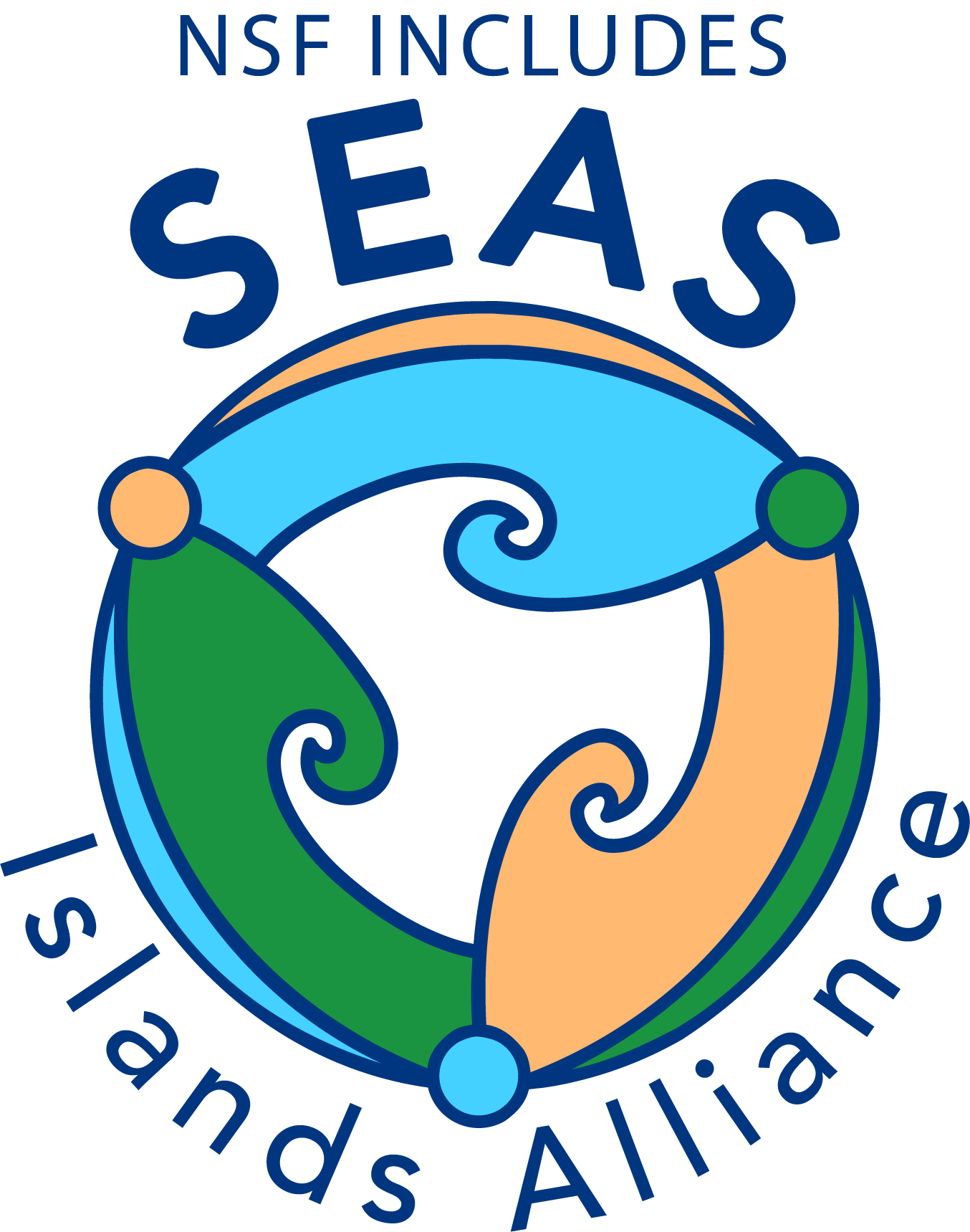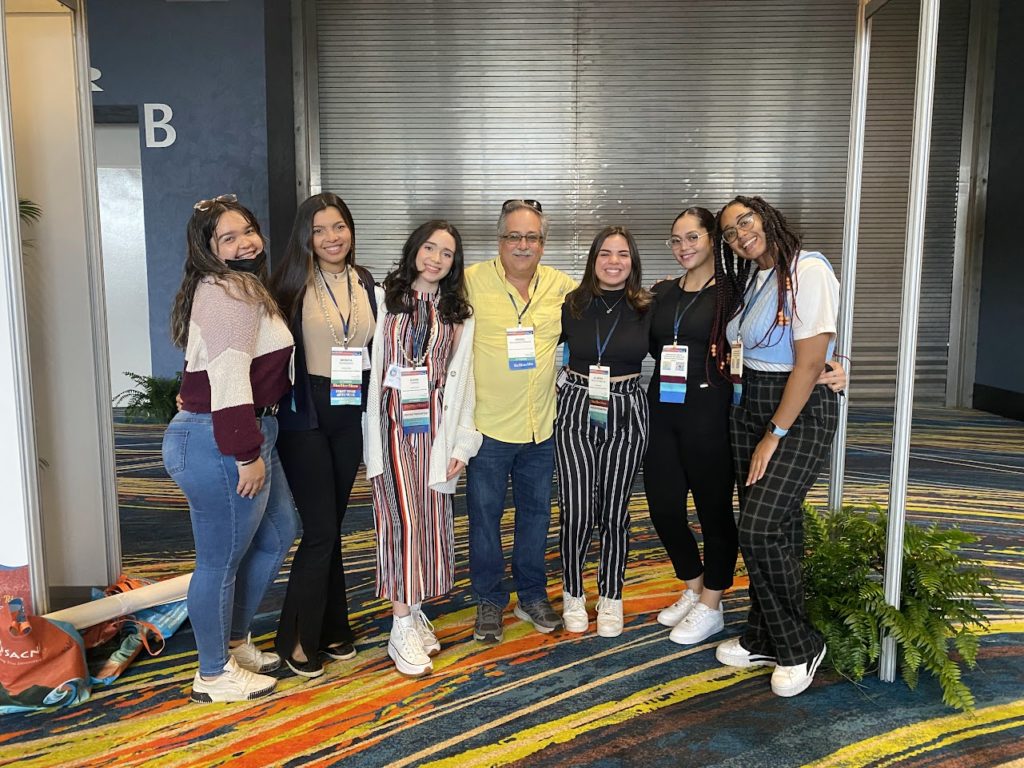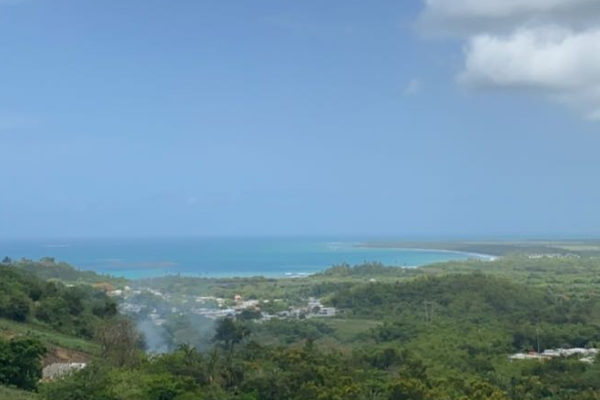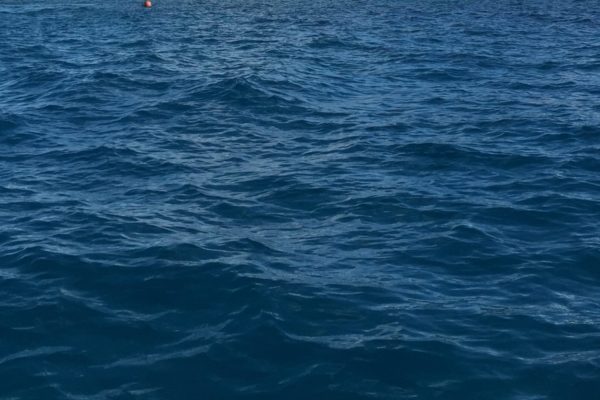 Meet Alexa Torres-Oliveras, an undergraduate biology student at Universidad Ana G. Méndez. Torres-Oliveras is also a member of the Puerto Rico hub of the SEAS Islands Alliance at Universidad Interamericana de Puerto Rico.
Meet Alexa Torres-Oliveras, an undergraduate biology student at Universidad Ana G. Méndez. Torres-Oliveras is also a member of the Puerto Rico hub of the SEAS Islands Alliance at Universidad Interamericana de Puerto Rico.
Tell me about yourself.
My name is Alexa Torres-Oliveras. I’m from Puerto Rico. I’m a third-year bachelor’s student, and I’m studying biology with the purpose of going to vet school to be a veterinarian. I’m in the SEAS Islands Alliance, so I also really enjoy learning about environmental science and my topic of primary production. Some people might think it’s boring, but I think it’s interesting.
What is primary production?
It has to do with photosynthesis and respiration. Basically, it’s the production of oxygen. That’s how I explain it because not everyone has the understanding, and sometimes science can be so complicated. They use words that not everyone can understand, so I like to make it very simple. We’re measuring the oxygen in the water in the Laguna Grande de Fajardo. That’s my project. We measure dissolved oxygen, and we use that data to later calculate the net productivity, primary productivity, and respiration rates.
There are a lot of calculations. I’m not really good at that, but thank God, I like Excel. It was amazing getting to learn what it’s like to handle a fair amount of data. I had a lot of help from Lora and my research partner Monica. I’m grateful for that. Lora is a scientist and a mentor in the SEAS program, so she does what I did but on a much larger scale. It’s cool that we had the privilege of working with Lora on such an exciting topic. She has so much knowledge, and she’s actually a co-author of our research poster.
How did you like working on this research project?
It was an amazing experience filled with new knowledge and skills. We worked nonstop for about three weeks while we prepared the data and did all the calculations needed to better analyze it. First, I was taking care of the data, putting it into tables, and trying different layouts. We had to make so many conversions, so that was hard work. I think I have a head start now, because I’ve already worked with data and done formulas in Excel.
Doing the poster was fun. I didn’t sleep for two days because I was trying to make it look perfect. I’m a perfectionist, even though that’s not the best thing sometimes. I wanted to showcase the data that we collected in a way that was clear. I used photos that my friend and research partner Monica took. They were so beautiful. I wanted people to see one of the many places that Puerto Rico has, and the place where we got to work every month.
Are you excited to present your poster at the National Diversity in STEM Conference?
I am. When we did a practice presentation, I was so nervous that I couldn’t look at people. We have a saying, “Trágame tierra.” It means I want the dirt to swallow me. [laughs] I just felt so uncomfortable. Like, I know the material, I worked on it, and I read it 100 times checking for errors. I know what’s written but didn’t know how to properly explain it. But I’m happy because I got really good feedback. I’ll still be nervous and I’m sure I’ll mess up, but it’s OK. It’s part of the experience, and it’s my first time presenting a poster.
- Torres-Oliveras presented her scientific poster at the National Diversity in STEM Conference in late October. Pictured from left to right: Lora Harris, Mónica Rodríguez Pabón, and Alexa Torres-Oliveras.
- Students pose for a photo with Pedro Maldonado-Rivera, a SEAS Islands Alliance Puerto Rico hub mentor, at the National Diversity in STEM Conference.
How did you first get involved with the SEAS Islands Alliance?
I learned about the SEAS program by email from my university. I was looking for associations to join. It was in the pandemic (I started in 2020), so everything was just so boring. I wanted something different, and I had the time. So, I thought, why not? I was hesitant at first. I wasn’t sure if I could apply because I was so inexperienced. I remember I had a meeting with Pedro and Maria, two of our SEAS Puerto Rico hub mentors, and I also wrote an essay. I thought I wouldn’t get the opportunity because I want to be a vet, and animals don’t have a lot to do with environmental science. But I’m here, and I’m very happy that I got to participate.
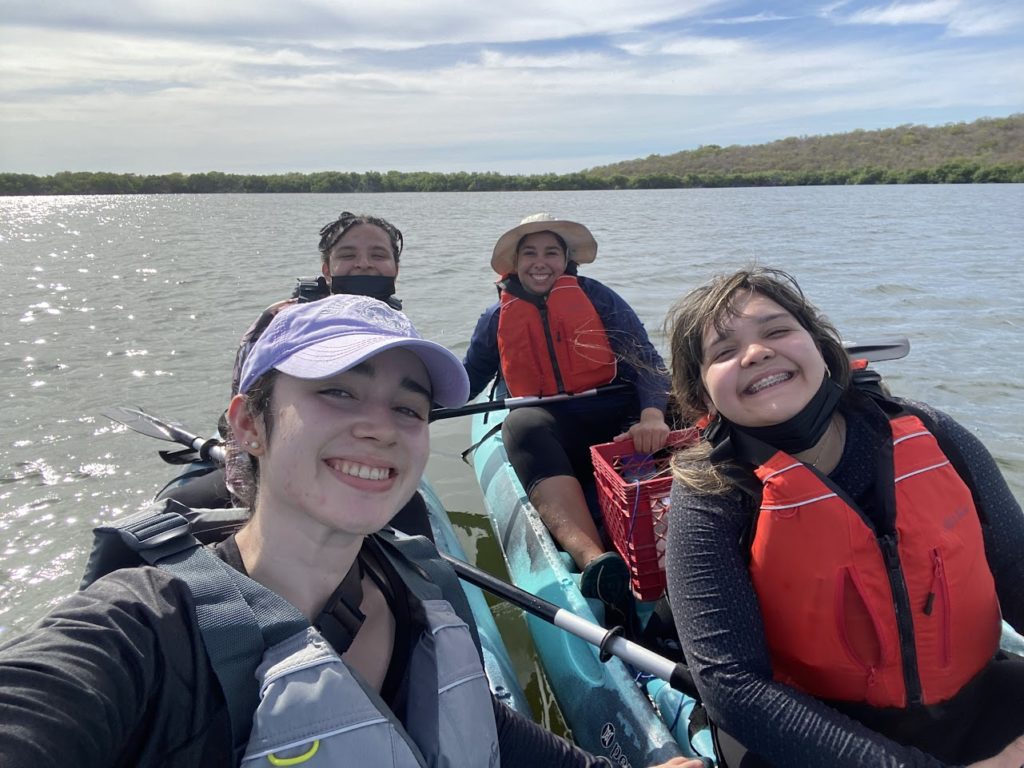
Apart from your research project, what else have you done with SEAS?
We took classes with Pedro and Maria but also with Lora and Jamie, another professor. It was difficult at times because of how dense the material and certain topics were. But it was interesting to talk with scientists and to learn more about their thought processes. They speak with a certain vocabulary that I didn’t understand at first. I can understand better now, and that’s something I think will help me in the future.
They also took us to Vieques, and we went to Mosquito Bay. I will not forget it. I say it’s even better than the Avatar movie. You know how in Avatar there are things that glow, and everything is beautiful? Well, it felt like that in the Bay. And just knowing that those are dinoflagellates … We had studied that before. Jamie brought every type of gadget, and it was funny and fun at the same time. We went to see the bioluminescence, but we also got to learn a lot during that trip and make relationships with the other students. That was such a good way of getting to know each other.
Have there been any surprises or highlights of participating in the SEAS Islands Alliance?
I’ve made amazing friends, amazing. My partner has become my best friend. Other than being in an association for studying, it’s also great to have a support group. That’s something I really emphasize. I need people around me that are going to be there. I was scared I wasn’t going to make friends. I was too shy in high school. At university, I’ve made it my mission to branch out and meet other people. I’m more outgoing now because I have more confidence.
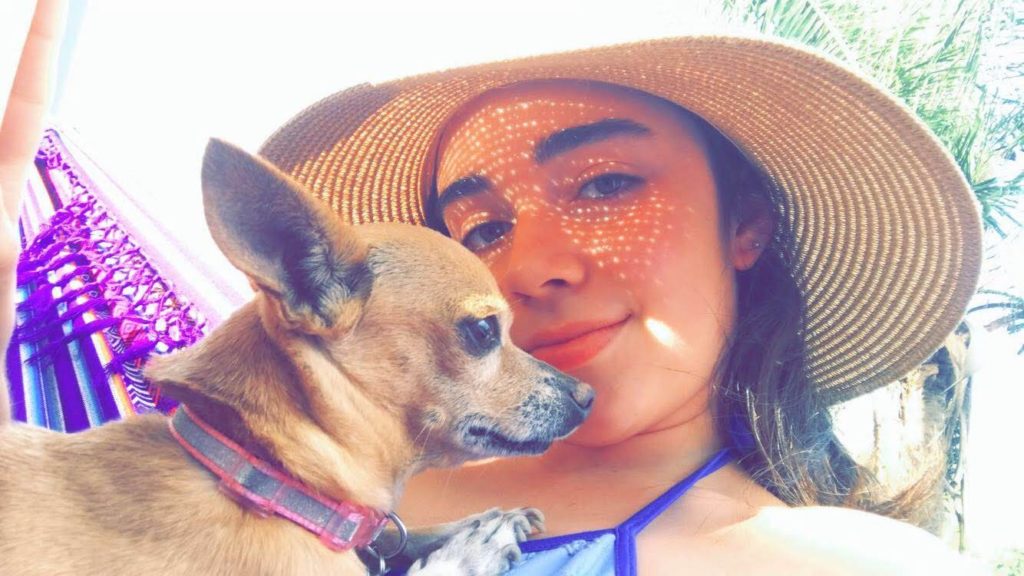
What do you like to do outside of school?
I’d like to start snorkeling. I watch all sorts of shows, movies, dramas, but I don’t really have the time with my studies. I like to hang out with friends. I work out and go on walks with my dog. I have a little chihuahua, Minnie Marie Torres-Oliveras. She’s 12 years old already, so I enjoy spending time with her. And when I’m not here in Puerto Rico, I’m in Orlando traveling to see my mom and my siblings. I like traveling. That’s something I do quite often.
What advice you would give to other students?
Have a balance between studying, being in an association, and having a personal life. It can be hard sometimes, so be on top of it, be organized, and have a schedule. I have a Google Calendar with everything I have to do. I put when I have to clean, when I have to study, my classes. Having that organization is very important. Communication is important too.
I’m excited because I’ll be helping the next group of students that will continue research on primary production in Laguna Grande. Monica and I already offered to teach them how to gather the samples. When it comes to the data, we don’t want them to have the same challenges we had, because we maybe could’ve done it better. I like to joke that they’re going to have five more graphs and so much more data than me.
Interview by Ashley Goetz, science writer and digital specialist with Maryland Sea Grant.
